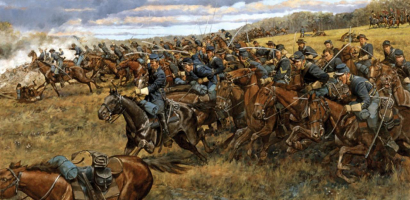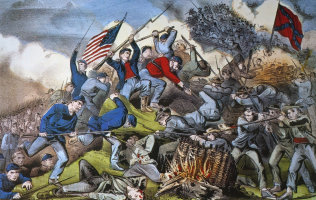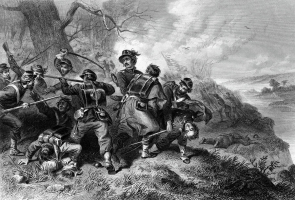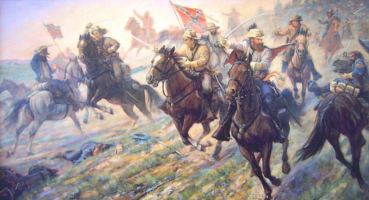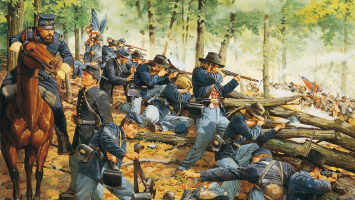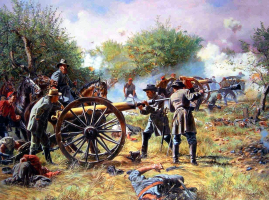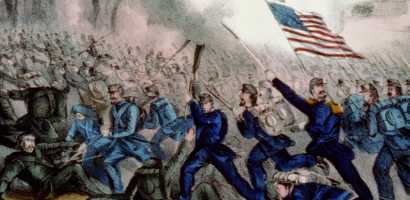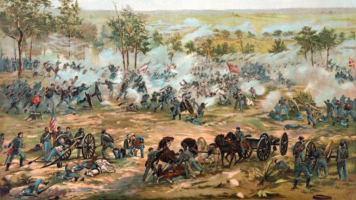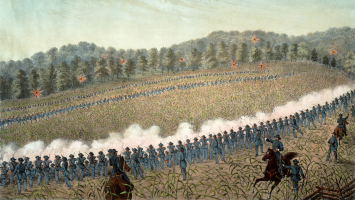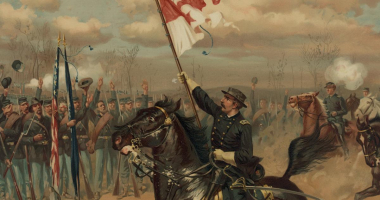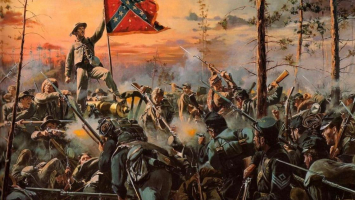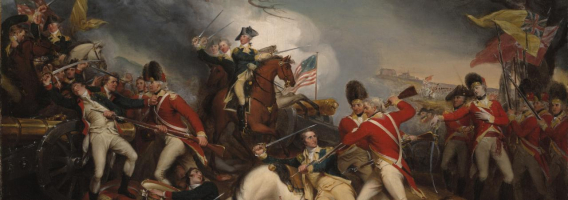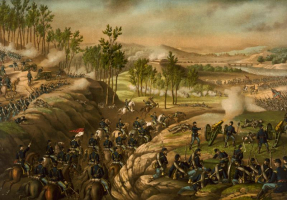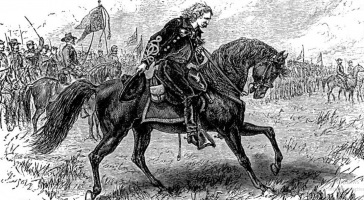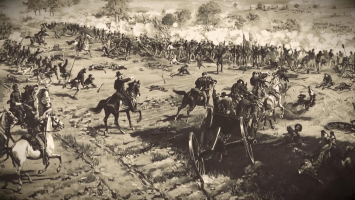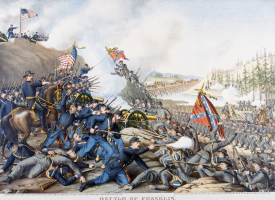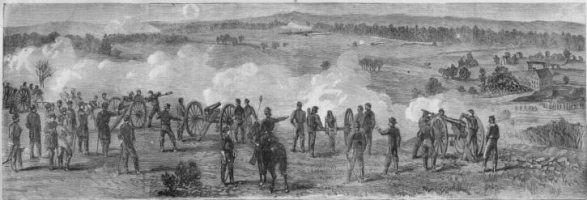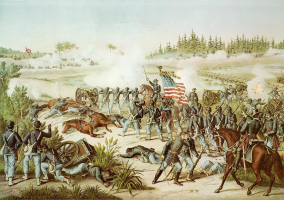Top 9 Facts About The Battle of Fredericksburg
The Battle of Fredericksburg took place in and around Fredericksburg, Virginia, from December 11 to 15, 1862, in the American Civil War's Eastern Theater. The ... read more...Conflict of Fredericksburg drew approximately 200,000 soldiers, the highest troop concentration in any Civil War battle. Here are some interesting facts about the Battle of Fredericksburg you should know.
-
One of the interesting facts about the Battle of Fredericksburg is that Fredericksburg hosted the highest number of soldiers in a Civil War battle. The Battle of Fredericksburg took place in and around Fredericksburg, Virginia, from December 11 to 15, 1862, in the American Civil War's Eastern Theater. The fighting between the Union Army of the Potomac, led by Maj. Gen. Ambrose Burnside, and the Confederate Army of Northern Virginia, led to failed frontal assaults by the Union army on December 13 against entrenched Confederate forces along the Sunken Wall on the heights behind the city.
The Conflict of Fredericksburg drew approximately 200,000 soldiers, the highest troop concentration in any Civil War battle. Ambrose Burnside, the recently appointed commander of the Army of the Potomac, had ordered his more than 120,000 troops to cross the Rappahannock River and launch a two-pronged attack on Robert E. Lee's 80,000, strong Army of Northern Virginia at Fredericksburg. Lee's rebel soldiers repelled the Union assault with significant fatalities (almost 13,000), particularly from their high position atop Marye's Heights. After the failure of Lee's first invasion of the North at Antietam the previous fall, the results of the battle sent Union morale falling and gave much-needed new fire to the Confederate cause.
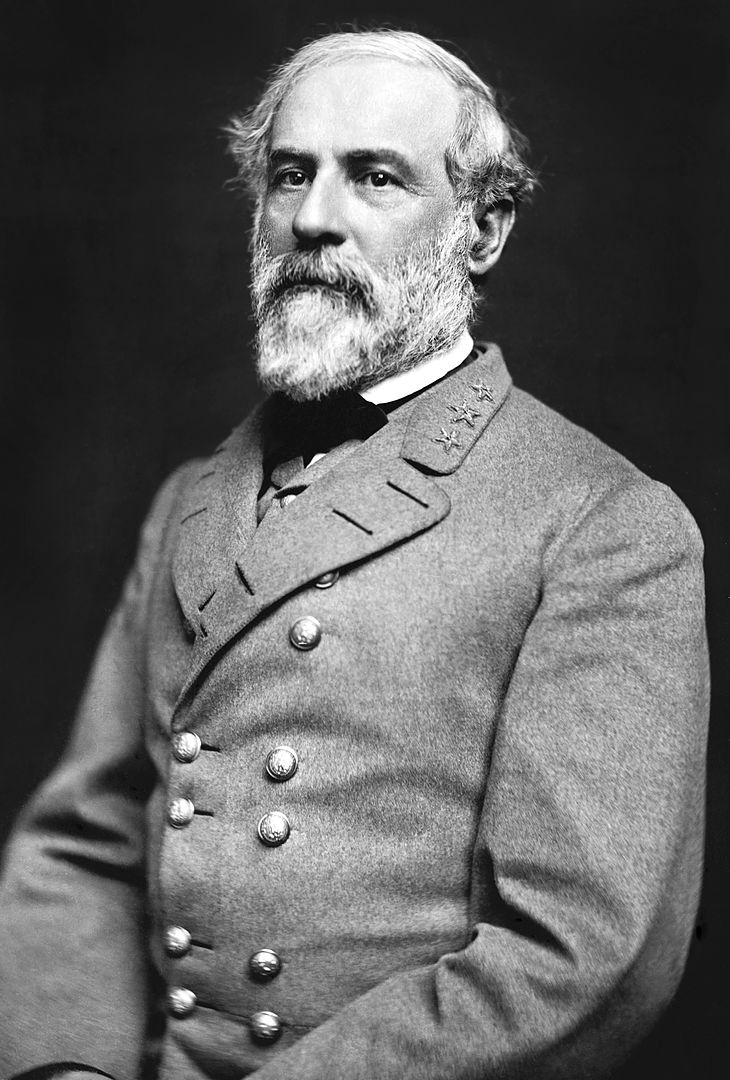
Gen. Robert E. Lee -en.wikipedia.org 
General Ambrose Burnside -en.wikipedia.org -
One of the interesting facts about the Battle of Fredericksburg is that Union General Ambrose Burnside did not really want to lead the Army of the Potomac. In November 1862, US President Abraham Lincoln sought to demonstrate the Union war effort's effectiveness before the Northern populace lost faith in his administration. Major General Ulysses S. Grant was persuaded by Lincoln to proceed toward the Confederate stronghold of Vicksburg, Mississippi. He replaced Maj. Gen. Don Carlos Buell with Maj. Gen. William S. Rosecrans, hoping for a more aggressive posture against the Confederates in Tennessee, and on November 5, seeing that his replacement of Buell had not stimulated Maj. Gen. George B. McClellan into action issued orders to take command of the Army of the Potomac in Virginia. McClellan had stopped General Robert E. Lee's soldiers at Antietam in Maryland, but he was unable to destroy Lee's army, nor did he pursue Lee back into Virginia strongly enough for Lincoln.
Maj. Gen. Ambrose Burnside, commander of the IX Corps, took over as McClellan's replacement. Burnside had established a reputation as an independent commander earlier that year in coastal North Carolina, and, unlike McClellan, he had no obvious political ambitions. However, he felt unfit for army-level command and declined the role when it was offered to him. “Had I been asked to take it I should have declined; but, being ordered, I cheerfully obey”, he wrote to a colleague. Another element in Burnside's decision to take the post was his desire to prevent his subordinate, Maj. Gen. Joseph Hooker (Lincoln's second choice for the post), from taking charge, as Burnside disliked Hooker. On November 10, 1862, Burnside gained command of the army and began preparing a daring strategy to capture Richmond.
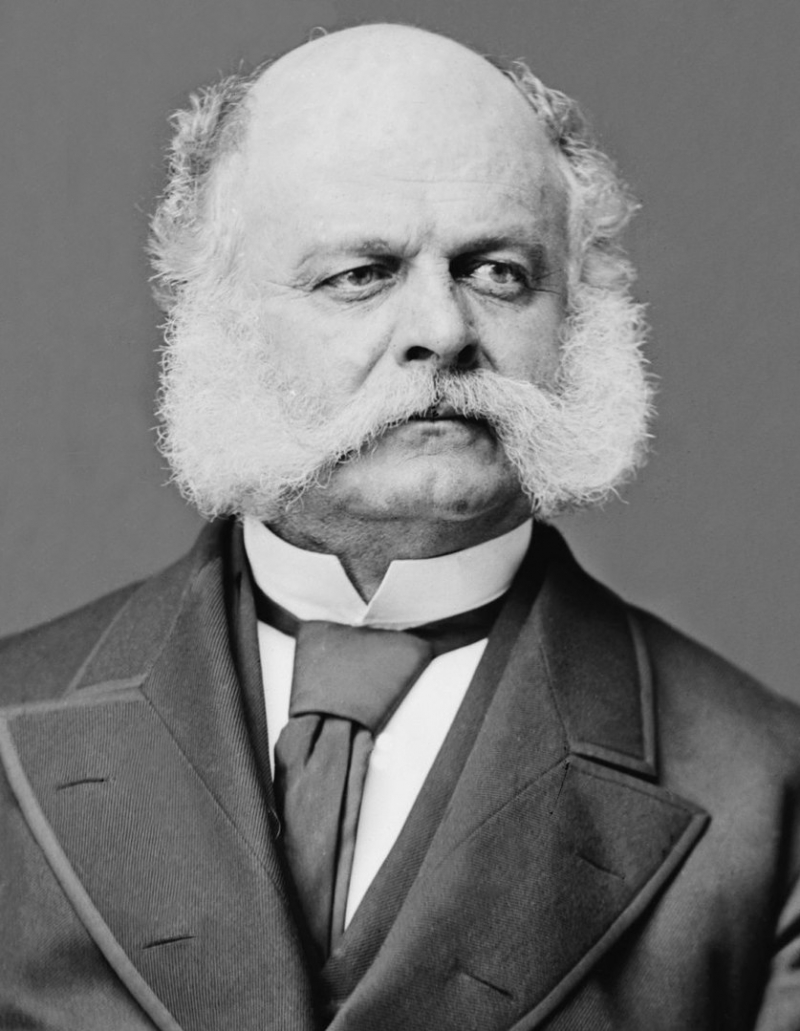
Ambrose Burnside -en.wikipedia.org 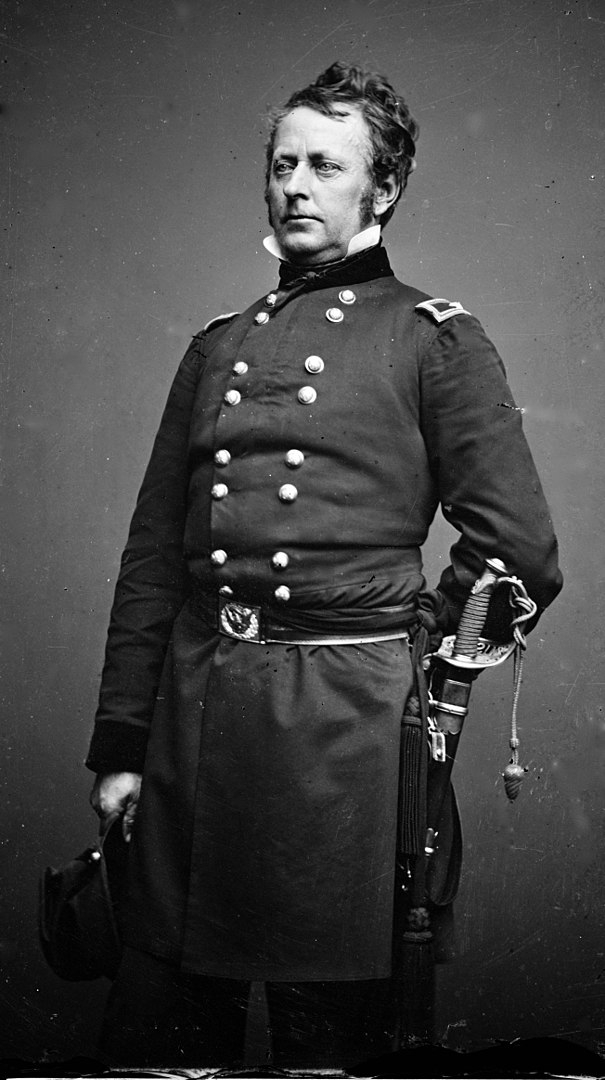
Joseph Hooker -en.wikipedia.org -
Another interesting fact about the Battle of Fredericksburg is that Burnside was unable to receive the requisite pontoon bridges on time due to bureaucratic delays. On November 15, the Union Army began moving, and the first forces arrived in Falmouth on November 17. Burnside's plan rapidly went awry, he had ordered pontoon bridges to be rushed to the front and built for his speedy crossing of the Rappahannock, but the bridges did not arrive on time due to administrative blundering.
On November 25, the boats and supplies for a single pontoon bridge arrived in Falmouth, far too late for the Army of the Potomac to cross the river without opposition. Burnside still had a chance because he was only facing half of Lee's force, which had not yet dug in, and if he acted swiftly, he might have been able to attack Longstreet and destroy him before Jackson arrived. He squandered another opportunity. The complete complement of bridges arrived by the end of the month, but Jackson was already present, and Longstreet was planning substantial defenses.
Burnside had intended to cross his army east of Fredericksburg at Skinker's Neck, but an advance movement by Federal gunboats to that point was fired upon, drawing Early's and D.H. Hill's subdivisions in that domain. Burnside surmised that the Confederates had weakened their left and center in order to concentrate on Lee on their right, assuming Lee had foreseen his plan. As a result, he opted to cross at Fredericksburg directly. In addition to his numerical superiority in soldier strength, Burnside had the knowledge that his army. On the other side of the Rappahannock, 220 artillery pieces were stationed on the Stafford Heights ridge to prevent Lee's army from mounting major counterattacks.
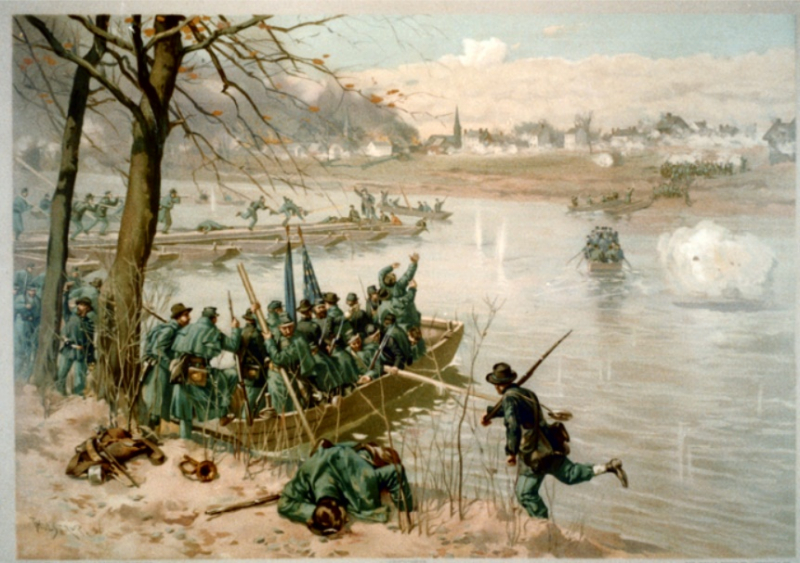
Pontoon bridge in the Battle of Fredericksburg -ironbrigader.com 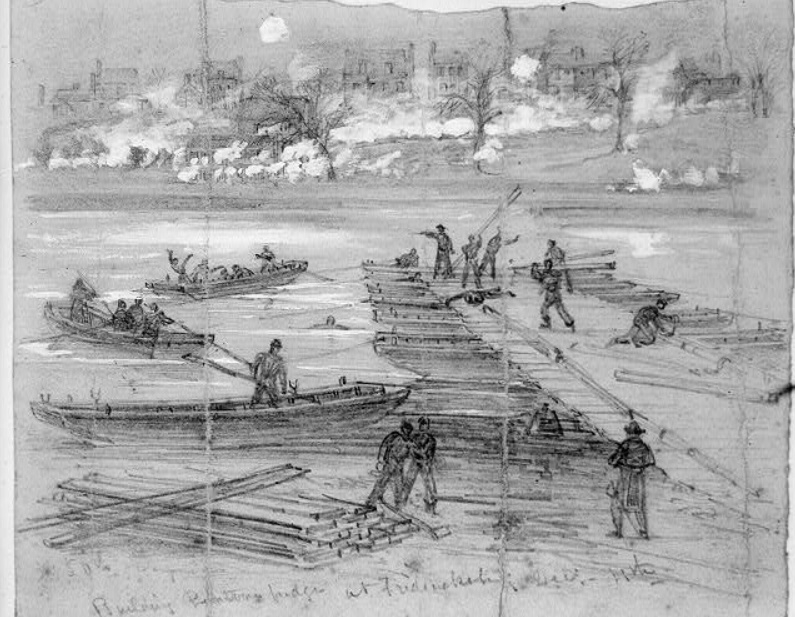
tile.loc.gov -
One of the interesting facts about the Battle of Fredericksburg is that the battle involved the first major opposed river crossing in American military history. Before dawn on December 11, Union engineers began assembling six pontoon bridges: two just north of the town center, a third on the southern edge of town, and three further south, near the confluence of the Rappahannock and Deep Run. Confederate sharpshooters, largely from the Mississippi brigade of Brig. Gen. William Barksdale, who was in command of the town defenses, opened fire on the engineers building the bridge just across from the city. Union artillery tried to dislodge the sharpshooters, but their positions in home cellars rendered the 150-gun bombardment relatively ineffectual. Brig. Gen. Henry J. Hunt, Burnside's artillery commander, eventually persuaded him to send infantry landing parties over on pontoon boats to capture a tiny bridgehead and defeat the sharpshooters.
Col. Norman J. Hall offered his brigade for this task. Burnside abruptly became hesitant, lamenting to Hall in front of his soldiers that the attempt would entail death for the majority of those who would embark on the expedition. Burnside relented after his men reacted to Hall's appeal with three cheers. At 3:00 p.m., the Union artillery began a pre-battle bombardment, and 135 infantrymen from the 7th Michigan and the 19th Massachusetts hurried onto the tiny boats, followed shortly by the 20th Massachusetts. Despite the fact that some Confederates surrendered, fighting continued through the town as the bridges were being built. Sumner's Right Grand Division started crossing at 4:30 p.m., but the majority of his troops did not cross until December 12. Hooker's Center Grand Division used both the northern and southern bridges to cross on December 13.
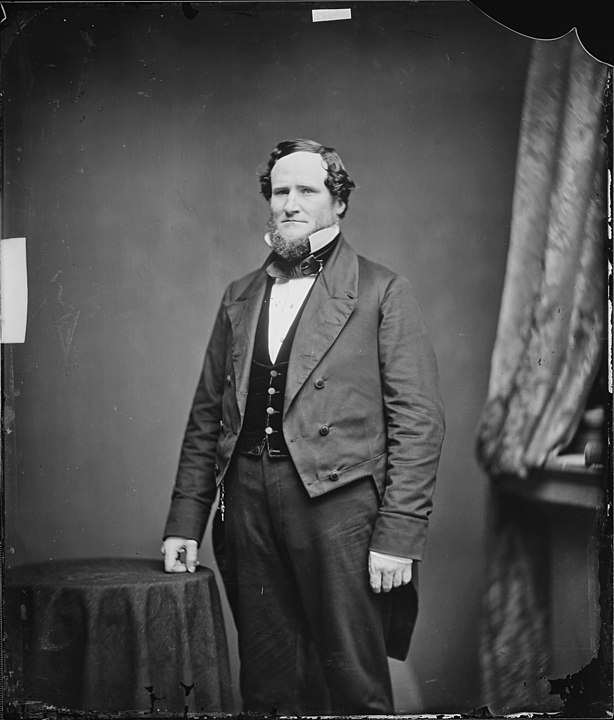
Mr. Boxdale -en.wikipedia.org 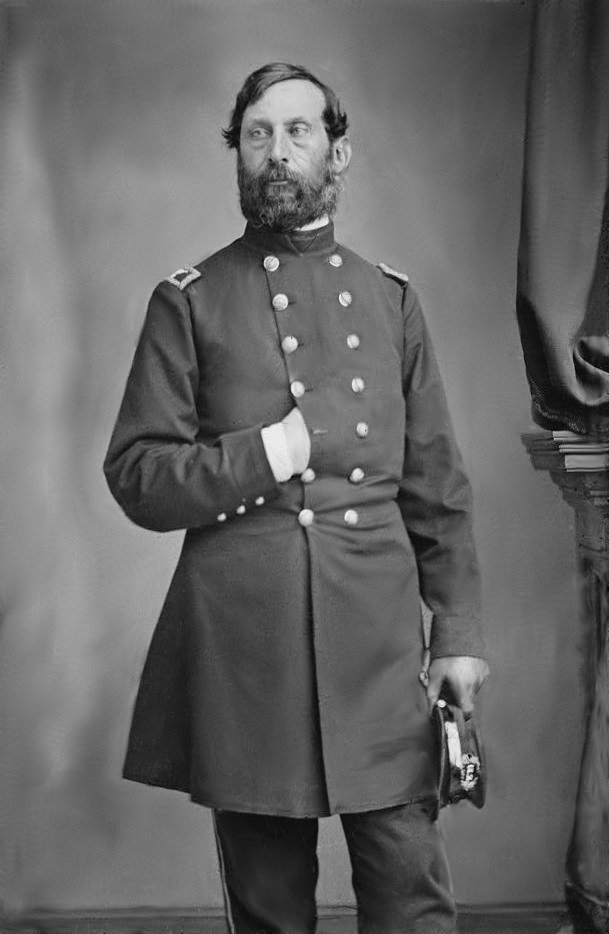
Col. Henry J. Hunt -en.wikipedia.org -
It is a fact that Jackson launched a successful counterattack that drove the Union soldiers back with heavy losses. According to Kate Lohnes (an editor of Encyclopaedia Britannica), on December 13, Franklin dispatched the Union forces to the left against an entrenched force led by Maj. Gen. Thomas Jackson. Franklin's men were able to breach the Confederate line, but ambiguous orders from Burnside caused Franklin to commit only one of his six divisions to the offensive. Franklin's failure to capitalize on this advantage allowed Jackson to execute a successful counterattack, driving the Union troops back with heavy casualties.
On the Confederate left flank, where Lieut. Gen. James Longstreet's corps held Marye's Heights, Burnside directed Maj. Gen. Darius Couch's corps launched a bayonet charge against the Confederate lines. The stone wall at the foot of the heights was lined with nearly every weapon Longstreet's corps could find a place to fire, while Confederate guns showered down on the invaders above them. Union artillery on the heights beyond the river was too far away to help. Division after the division was slaughtered, and not a single Union man made it to the wall. Sumner's and most of Hooker's brigades were completely destroyed, and the wrecks of the right wing were withdrawn that night. The Army of the Potomac withdrew to its camps at Falmouth on the night of December 15.
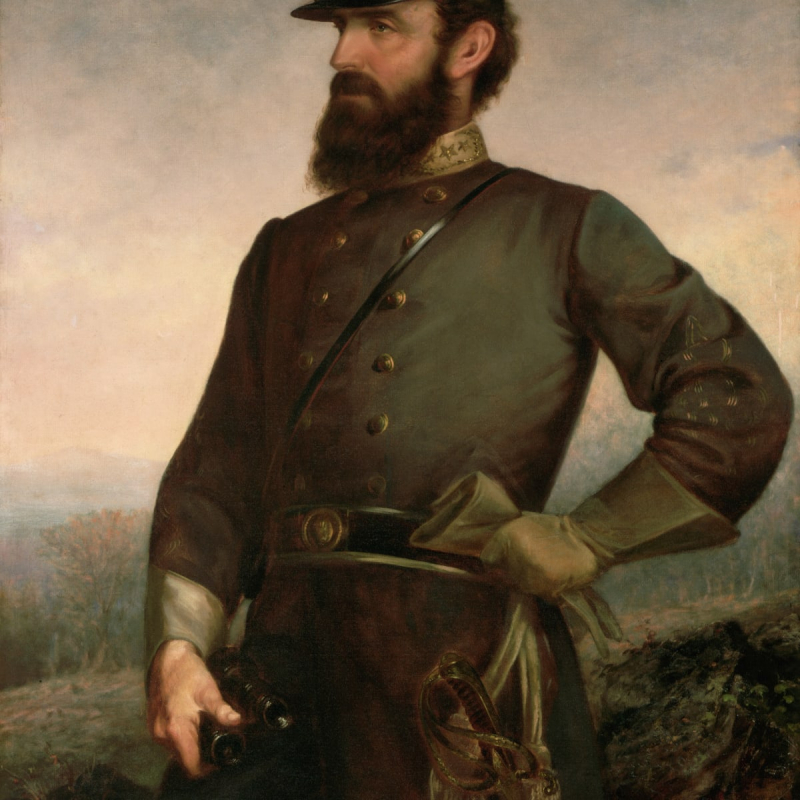
Stonewall Jackson -history.com 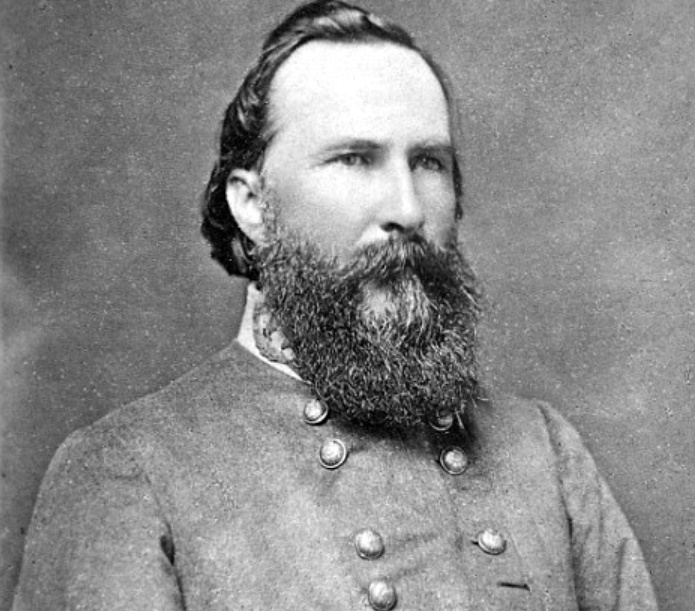
James Longstreet -en.wikipedia.org -
One of the interesting facts about the Battle of Fredericksburg is that at the Battle of Fredericksburg, the Union suffered a devastating loss. The Union suffered a terrible defeat during the Battle of Fredericksburg, despite the fact that their soldiers fought valiantly and well, but fell victim to mismanagement by their generals, including confusing orders from Burnside to Franklin. Burnside claimed responsibility for the defeat, however many attributed it to Lincoln's pressure to launch an impossible offensive. In the ensuing flurry of political recriminations, a majority of Republican senators voted to remove Secretary of State William Seward, who had been the prime target of their displeasure with the administration's handling of the war. After visiting the battlefield, Pennsylvania Governor Andrew Curtin went back to the White House. He told the president that it was a butchery, not a battle. "The President is a weak man, too weak for the occasion," wrote Senator Zachariah Chandler, a Radical Republican, "and those fool or traitor generals are wasting time and yet more precious blood in indecisive battles and delays."
The senators, led by Secretary of the Treasury Salmon Chase, pressured Lincoln to reform his cabinet, and when he refused, Chase resigned. Seward had also offered to resign, but Lincoln refused in both circumstances, smoothing over the cabinet issue and skillfully reducing the political ramifications of the Fredericksburg setback. In January 1863, President Abraham Lincoln appointed Joseph Hooker as commander of the Army of the Potomac.
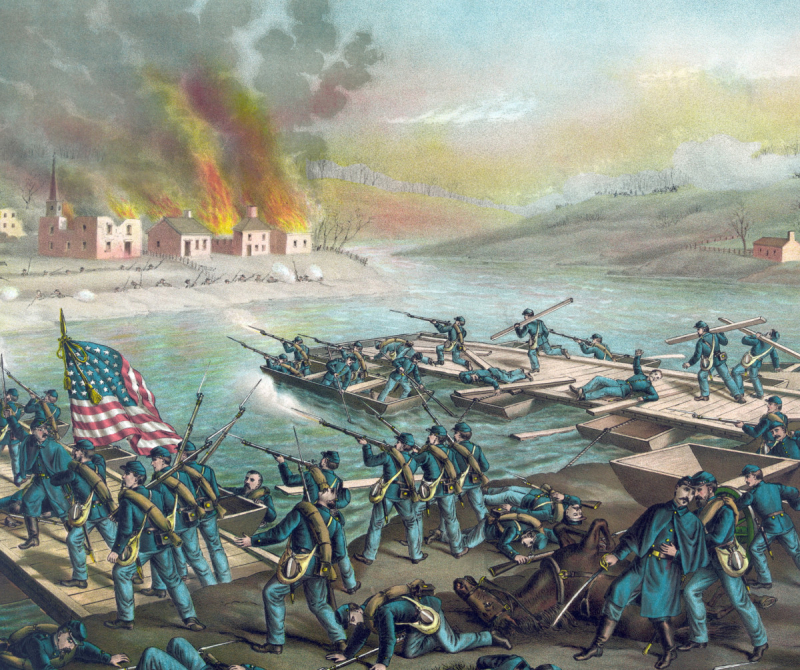
history.com 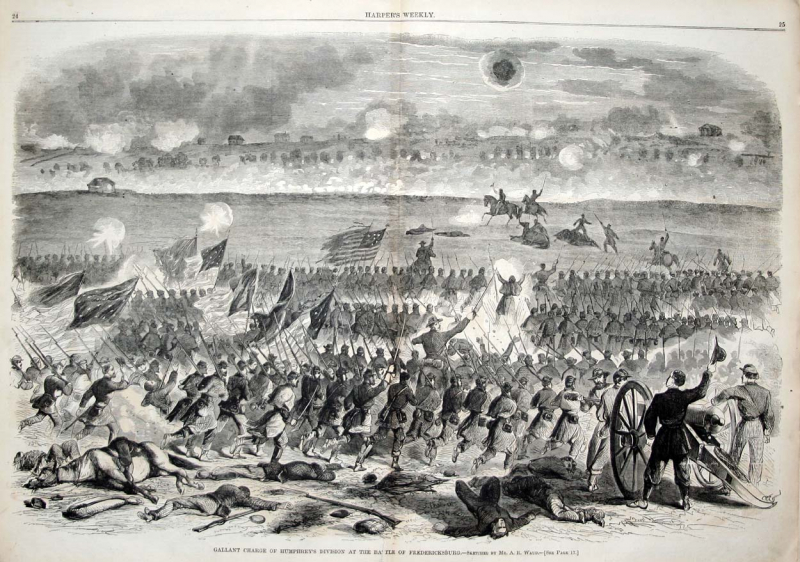
historyonthenet.com -
One of the interesting facts about the Battle of Fredericksburg is that the victory at Fredericksburg restored Confederate morale. After Lee's disastrous fall foray into Maryland, the Confederate victory at Fredericksburg boosted Confederate morale. Lee would lead a revitalized Army of Northern Virginia to an even more crushing victory over a numerically superior Union force at Chancellorsville in May 1863 before launching a second invasion of the North through Pennsylvania.
The South roared in joy at its big victory. The Richmond Examiner described it as a "stunning defeat to the invader, a splendid victory to the defender of the sacred soil." The Charleston Mercury described General Lee as "jubilant, almost off-balance, and seemingly desirous of embracing everyone who calls on him," adding, "General Lee knows his business and the army has yet known no such word as fail."
Lee himself was not as pleased as the rest of the South. He later wrote that At Fredericksburg they had gained a battle, inflicting a very serious loss on the enemy in troops and equipment; their people were enormously elated but he was greatly depressed because he thought that they had really accomplished nothing; they had not gained a battle.
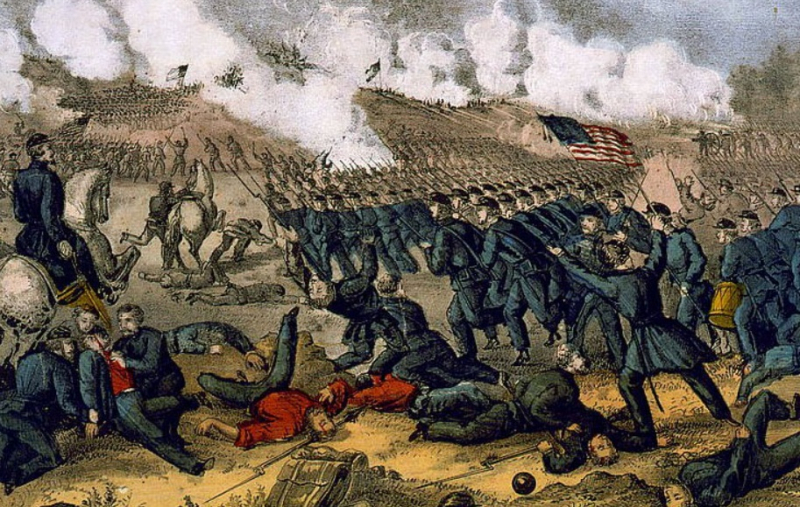
civilwaronthewesternborder.org 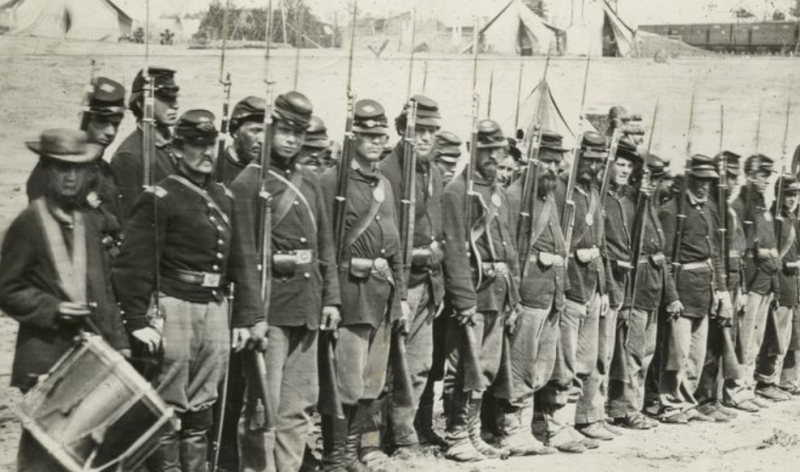
werehistory.org -
Fredericksburg was one of the Civil War's bloodiest and deadliest engagements, with approximately 200,000 fighters, the most of any Civil War engagement. It featured the first opposing river crossing in American military history, as well as the first instance of urban fighting during the Civil War. Victory for the Confederacy. The Union Army of the Potomac lost more than 12,500 men. Lee's Confederate force suffered around 6,000 casualties.
In detail, the Union army suffered 12,653 casualties (1,284 dead, 9,600 wounded, and 1,769 captured/missing). Two Union generals were mortally wounded: Brig. Gens. Conrad F. Jackson and George D. Bayard. The Confederate army suffered 5,377 casualties (608 dead, 4,116 wounded, and 653 captured/missing), the majority of whom died in the early battle on Jackson's front. Brig. Gens. of the Confederacy T. and Maxcy Gregg Both R. R. Cobb and R. R. Cobb were killed. Each army's casualties demonstrated how devastating the Union army's tactics were. Although casualties on the southern flank were fairly equal (about 4,000 Confederate, 5,000 Union), the action on the northern flank was completely lopsided, with almost eight Union casualties for every Confederate. Burnside's forces had lost far more casualties in the diversionary attack than in his main endeavor.
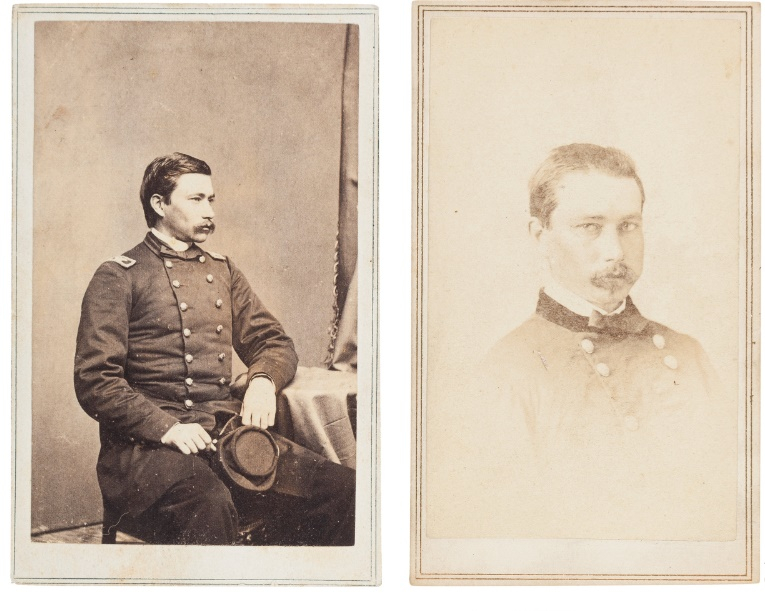
George Dashiell Bayard -historical.ha.com 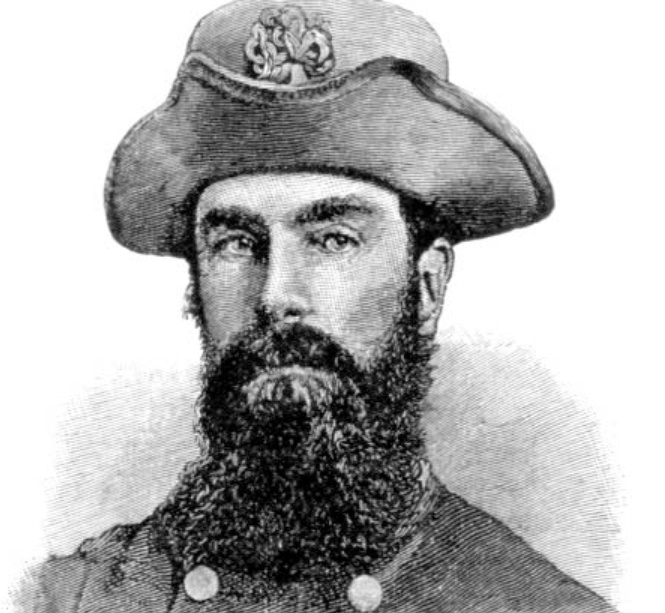
Maxcy Gregg -scencyclopedia.org -
It is a fact that the Fredericksburg and Spotsylvania National Military Park was established in 1927 to Preservation efforts of the Fredericksburg battlefield. The Civil War Preservation Trust announced in March 2006 the start of a $12 million national effort to conserve the historic Slaughter Pen Farm, a major section of the Fredericksburg battlefield. On December 13, 1862, the 205-acre property known locally as the Pierson Tract was the site of a terrible battle. At the Battle of Fredericksburg, Federal troops led by Maj. Gen. George Meade and Brig. Gen. John Gibbon made an assault against Lt. Gen. Thomas "Stonewall" Jackson's Confederates holding the southern portion of the Army of Northern Virginia's line. Despite massive casualties, Meade's Federal troops were able to temporarily infiltrate the Confederate line and offered the North's best chance of winning the Battle of Fredericksburg. The action on this southern section of the battlefield, which became known as the Slaughter Pen, resulted in 5,000 casualties and five Medal of Honor recipients.
The Slaughter Pen Farm was thought to be the greatest exposed portion of the Fredericksburg battlefield. It is also the only location on the battlefield where visitors may follow the Union assault on December 13 from beginning to end. The acquisition of the Slaughter Pen Farm on the Fredericksburg battlefield for $12 million has been described as the most ambitious nonprofit battlefield acquisition in American history
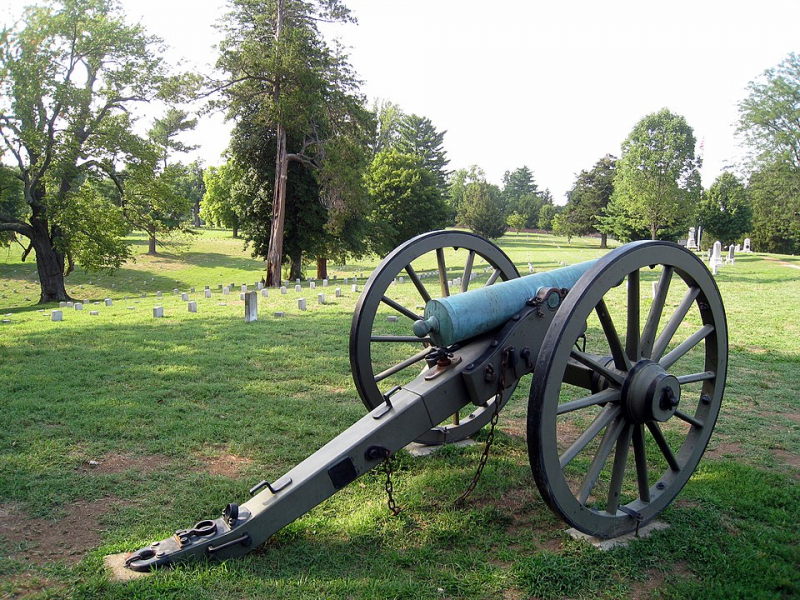
A piece of artillery from the historic Washington Artillery -en.wikipedia.org 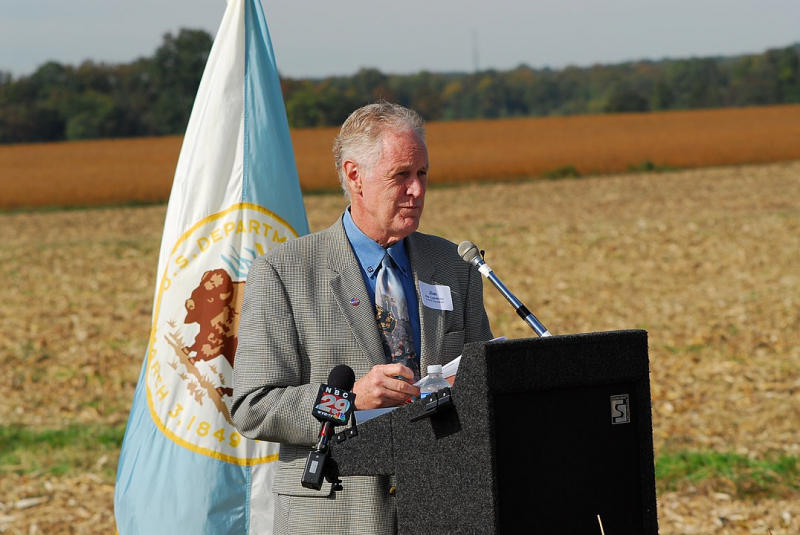
Jim Lighthizer at Slaughter Pen Farm -en.wikipedia.org











